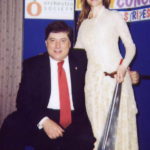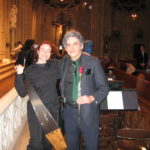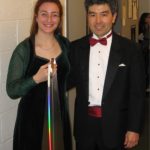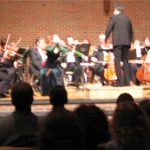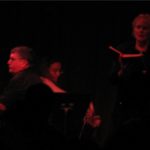Musical Saw Manual for Composers
If you have a composition that includes musical saw and you wish Saw Lady to record it remotely for you, please visit www.MusicalSawMusic.com
Composers in search of new sounds and new forms of musical expression are often fascinated with the sounds of the musical saw. The musical saw can be considered a string instrument because it is played with a bow; however, since beginner sawists play the saw with a mallet, that placed the saw in the percussion section. In either case, it is classified as an idiophone under the Hornbostel-Sachs system of musical instrument classification. An idiophone is any musical instrument which creates sound primarily by way of the instrument itself vibrating, without the use of strings or membranes. The musical saw belongs to the subdivision of friction idiophones - idiophones which are rubbed to produce the sound (similar to the glass-armonica).
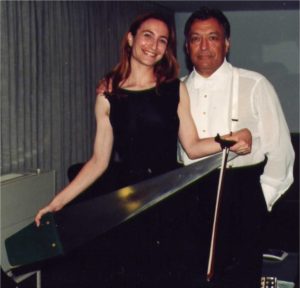
Natalia Saw Lady Paruz with Maestro Zubin Mehata after their performance with the Israel Philharmonic Orchestra
General
The First note the saw plays in a piece must be given by another instrument or the sawist won't know where to start to play (since playing the saw is done entirely by ear - there are no markings on the saw such as keys, frets, strings, etc.). As an example you could see in George Crumb's Ancient Voices of Children (2nd movement) that the first note of the saw is taken from the piano.
If the saw stops playing for more than 1 bar it should either get its new 1st note from some other instrument or be allowed to hold its last note through its new phrase (again, check out Ancient Voices of Children: the saw holds its last note and its new phrase starts with that same note).
The musical saw has an inherent quality of portamento (carrying on the tone from note to note without gaps, hence very legato and momentarily sounding the pitches in between any two indicated by the notation). However, it is not a necessity for the instrument.
Portamento is marked in sheet music for the saw by a wavy line from one note to the other.
An example of a piece that uses this quality of the saw is 'Plainte' (1949) for lame musicale and piano by Henri Sauguet.
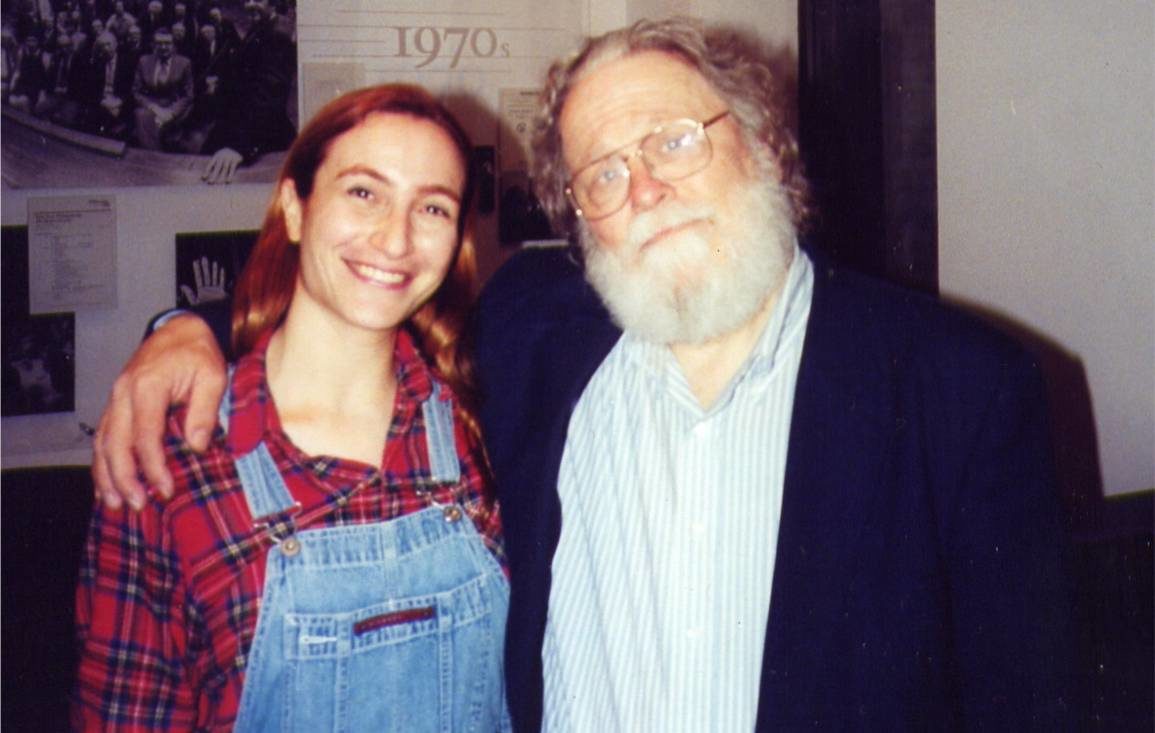

Range
Could go as low as D# above middle C but it is not a really clean sound. Starting a phrase that low is very difficult and unreliable. The lowest 1/2 an octave is much better sliding into. The saw sounds its most lyrical, angelic best from G above middle C to G two octaves above. The saw can get up to E flat above that with bowing and can slide up to G an octave above that! Again, the extreme octave doesn't sound as clear. It is difficult to play up there. It is much better to slide into a note in the higher ranges rather than to start a phrase there.
Summary: D#4-G7
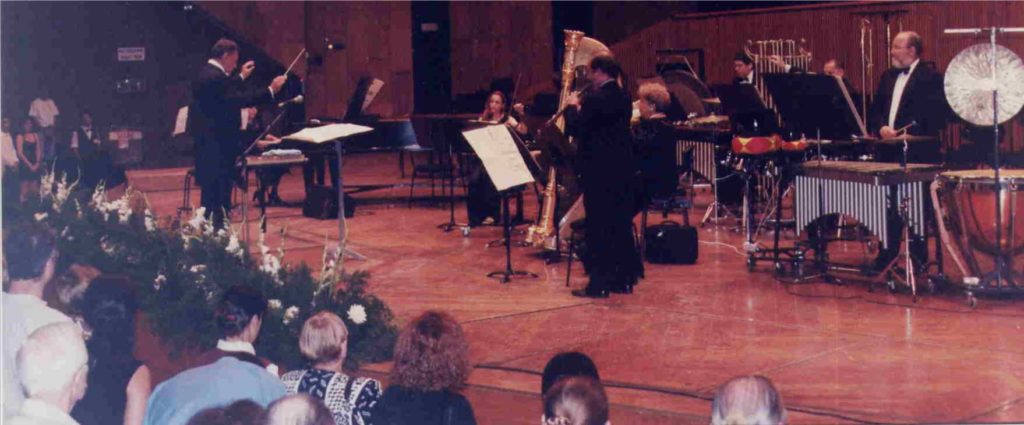
'Ancient Voices of Children' performance with the Israel Philharmonic Orchestra
Dynamics
As a general rule, the saw does a natural diminuendo when sliding from note to note (known as the "liturgical" quality of the saw, kind of similar to Gregorian chants where each phrase withers away). To avoid this quality one must bow each note which means you hear the scraping sound of the bow in addition to the notes.
The saw is the loudest in the mid range (G4-G6). In this range there is control over whether the notes are loud or soft. There are only 2 dynamics: loud or soft...(or gradually withering away). Both the high and low extremes of the range are not controllable - they are much softer in volume.
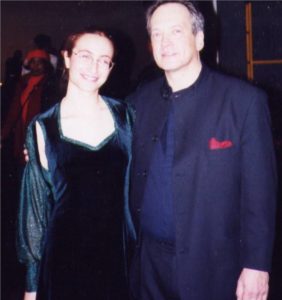
Saw Lady with composer/conductor Paul Dunkel after their performance with the Westchester Philharmonic Orchestra
Effects
Big slides both up and down, "siren" type "wowa" and a storm-wind effect.
Using a mallet: the mallet must be soft. The softer the mallet the more of the note one could hear rather than the banging itself. A hard (plastic or wood) mallet leaves marks on the saw and that's not good... The mallet is only good between C#4-C#6.
